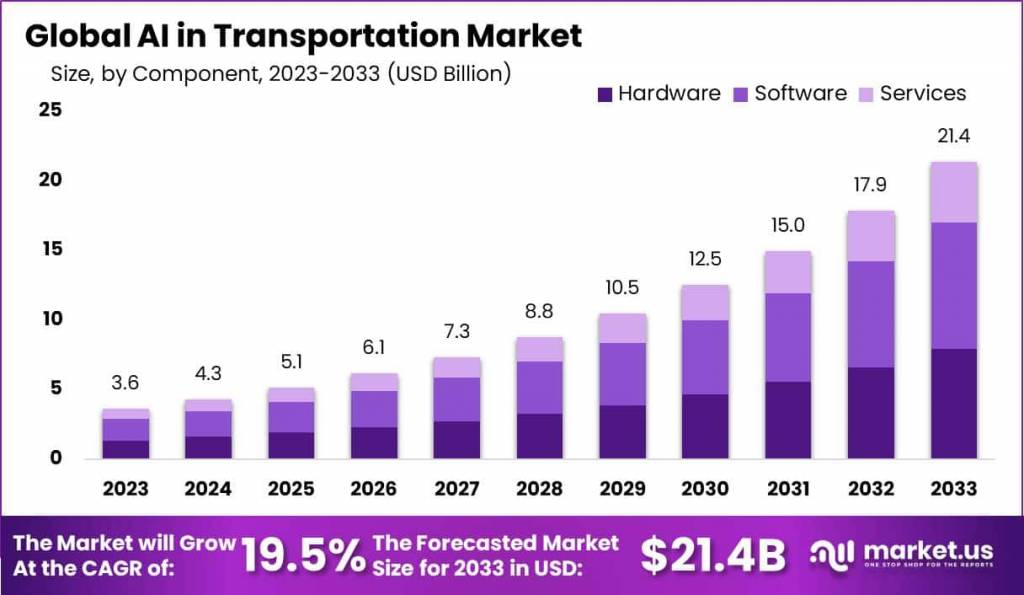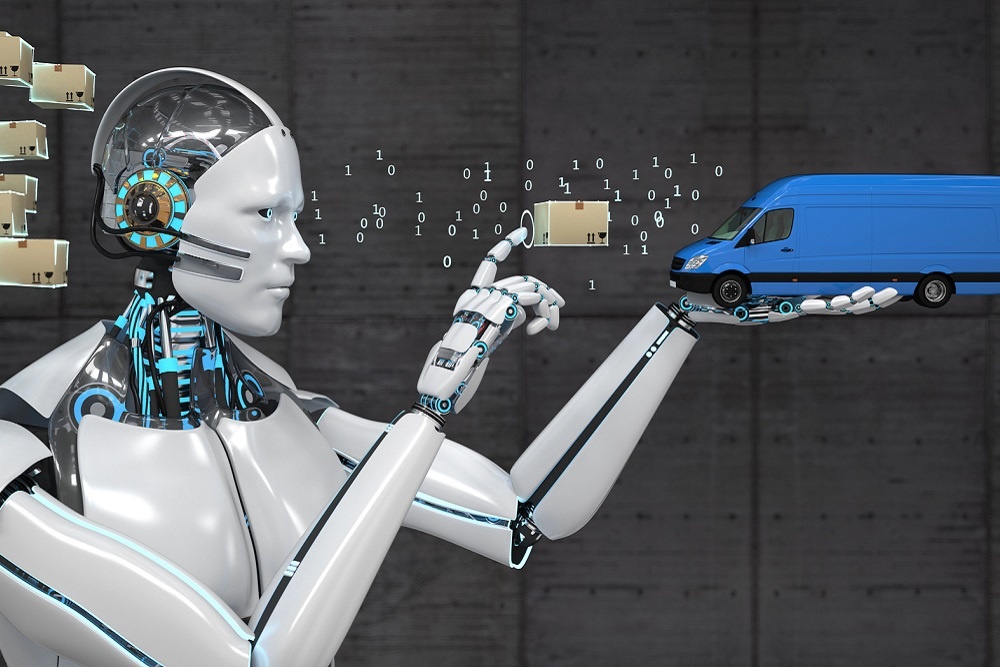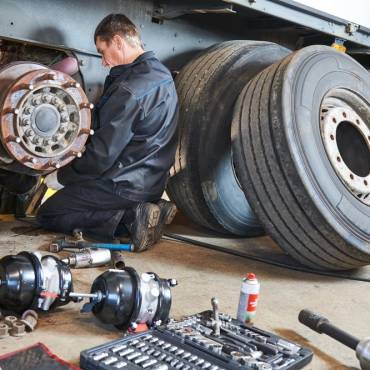While many people automatically think of self-driving trucks, that’s not the only application of AI in trucking. These days, AI logistics tools are empowering human drivers, fleet managers, warehouse operators, and more logistics industry professionals through applications like trucking route optimization and proactive maintenance. But where can AI trucking go? The sky is the limit
Below, learn more about the uses of AI in the trucking industry and how the latest tools and software could make your day-to-day more efficient.
AI Trucking & Supply Chain Management
Today, around one third of logistics companies use AI in their operations, including industry leaders like Amazon and FedEx.
Demand is expected to increase across the next decade, with 65% of logistics companies considering AI crucial for future growth. Here are some of the ways AI could help your trucking company grow or improve its current operations.
AI Trucking Route Optimization Software
Traditional GPS tools are invaluable for truck drivers, but they don’t always account for factors like weather, traffic patterns, or whether a road or bridge is truck-accessible. That’s where route optimization software comes into play.
AI software can draw from both historical trends and current data to identify the route that yields the fastest delivery times and most fuel efficiency. For example, the AI software might detect an icy road warning and suggest a detour, or route away from a bridge with a weight limit.
Of the logistics companies that have implemented AI into their operations, over 70% reported improved delivery times.
Advanced Driver Assistance Systems
Beyond planning the best routes, AI can also keep truck drivers safe on the job.
Automated driver assistance systems (ADAS) are a type of in-cab safety system that uses cameras, radar, and sensors to make real-time decisions while the truck is moving. For example, if the driver misses a car in their blind spot and starts to merge anyway, the ADAS can correct the swerve and potentially prevent a crash.
ADAS isn’t a full automatic replacement for a driver, but is more like a copilot that looks for and corrects common dangers, like driver fatigue or lane departures. Combined with route optimization software, it can protect truckers while keeping them on the most efficient routes.


Improved Operational Planning
AI software can help dispatchers improve planning and scheduling in their day-to-day.
For example, implementing AI into a fleet can allow you to track data for different drivers and trucks. The algorithms can then use the data to suggest the most fuel-efficient trucks and the best drivers for a particular delivery.
AI can also help you generate more accurate ETAs. For example, a standard GPS mainly uses distances and average speed limits. But AI tools take into account driver behaviors, current tracker patterns, and trends from your past data to reflect a more accurate, personalized ETA.
More Predictive Maintenance Systems With AI Trucking
Equipment failure can be a major cause of delivery delays, with losses ranging from an estimated $75 to $100 per hour of downtime. But AI can help you go beyond mile-based maintenance schedules with predictive modeling.
Predictive maintenance systems use sensor data and machine learning to identify warning signs for mechanical problems, sometimes before the driver even recognizes them.
For example, sensors in the engine might pick up abnormal temperature spikes before it affects the truck’s performance. This proactive monitoring could allow you to schedule maintenance on the engine and possibly prevent a costly breakdown
Fully Autonomous Semi Trucks
While not widespread just yet, driverless, fully self-driving trucks are becoming more and more advanced, with companies like Aurora Tech already deploying fully autonomous delivery services in the US.
Data from the US Library of Congress indicates that fully autonomous trucks will begin to appear on highways as early as 2027. When truck driver shortages still persist in the tens of thousands, self-driving trucks could fill the gaps and keep deliveries moving.
However, autonomous semi trucks don’t necessarily have to “replace” drivers. They could also offer a way for truck drivers to take breaks or reduce fatigue while meeting delivery goals, like letting a copilot takeover for a while.
Drawbacks & Hurdles of Implementing AI Trucking
While AI is a powerful tool that’s already making an impact, implementing it does come with challenges. Some of the most common hurdles facing trucking companies today include:
- Cost. While AI can become a cost-saving measure after implementation, installing new software, sensors, or paying for monthly subscriptions could be an out-of-reach investment for small or mid-sized fleets.
- Data quality problems. AI tools like route optimization and proactive maintenance need accurate data to produce the best results. Inaccurate driver logs, faulty sensors, or hardware errors could all produce unoptimal results for trucking companies.
- Training requirements. As with any new software, employees at every level will need training to understand the new systems, which takes time and money to implement properly.
- Data privacy. While AI’s real-time data is convenient, the interconnected nature can leave your data vulnerable to hacks or tampering. Smaller fleets may not have the IT staff to proactively manage their cybersecurity.
- Regulations. AI is still widely unregulated in the US, and it’s unclear how any new laws or trucking industry regulations might shape future implementations.
It’s up to every individual trucking company to determine if the benefits of AI outweigh the risks and drawbacks.
AI in Trucking: Conclusion
Through AI-powered tools like route optimization software, advanced driver assistance, and predictive maintenance systems, trucking companies have new ways to meet delivery goals and minimize delays and downtime.
AI adoption isn’t without its challenges for small or mid-sized fleets, like cost and employee training. But when an estimated 70% of trucking companies that implemented AI reported better delivery times, it’s well worth exploring how trucking AI tools could improve your current operations.
For more industry insights, trends, and tips for trucking professionals, check out our New England Trucking blog.



